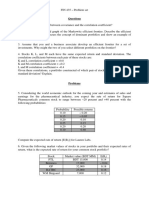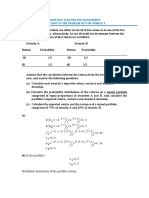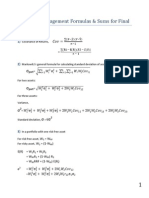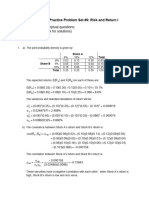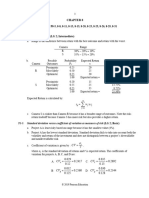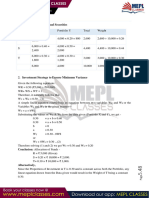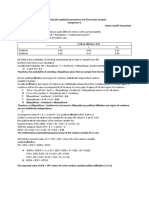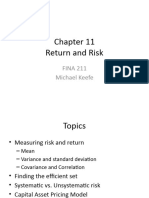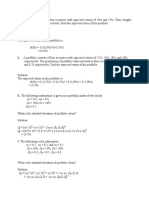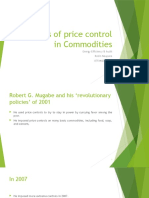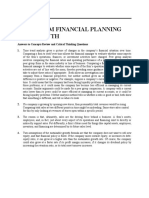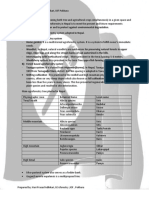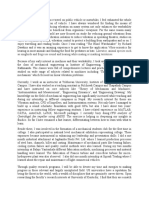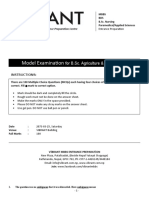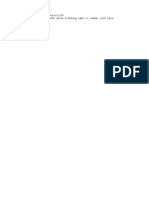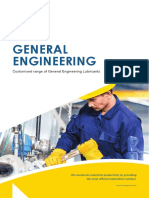0% found this document useful (0 votes)
86 views8 pagesTutorial Set 9 Solutions
The document provides solutions to tutorial questions on risk and return, including explaining the differences between systematic and unsystematic risk, how risk is affected by the number of securities in a portfolio, calculating the expected return and standard deviation of portfolios, and analyzing the correlation and covariance of returns for different indexes. Formulas are provided and calculations are shown using a financial calculator to determine expected returns, standard deviations, covariance, and correlation from given return data.
Uploaded by
RabinCopyright
© © All Rights Reserved
We take content rights seriously. If you suspect this is your content, claim it here.
Available Formats
Download as PDF, TXT or read online on Scribd
0% found this document useful (0 votes)
86 views8 pagesTutorial Set 9 Solutions
The document provides solutions to tutorial questions on risk and return, including explaining the differences between systematic and unsystematic risk, how risk is affected by the number of securities in a portfolio, calculating the expected return and standard deviation of portfolios, and analyzing the correlation and covariance of returns for different indexes. Formulas are provided and calculations are shown using a financial calculator to determine expected returns, standard deviations, covariance, and correlation from given return data.
Uploaded by
RabinCopyright
© © All Rights Reserved
We take content rights seriously. If you suspect this is your content, claim it here.
Available Formats
Download as PDF, TXT or read online on Scribd
/ 8








